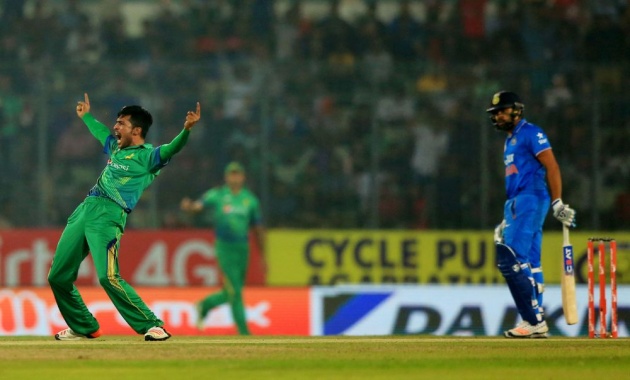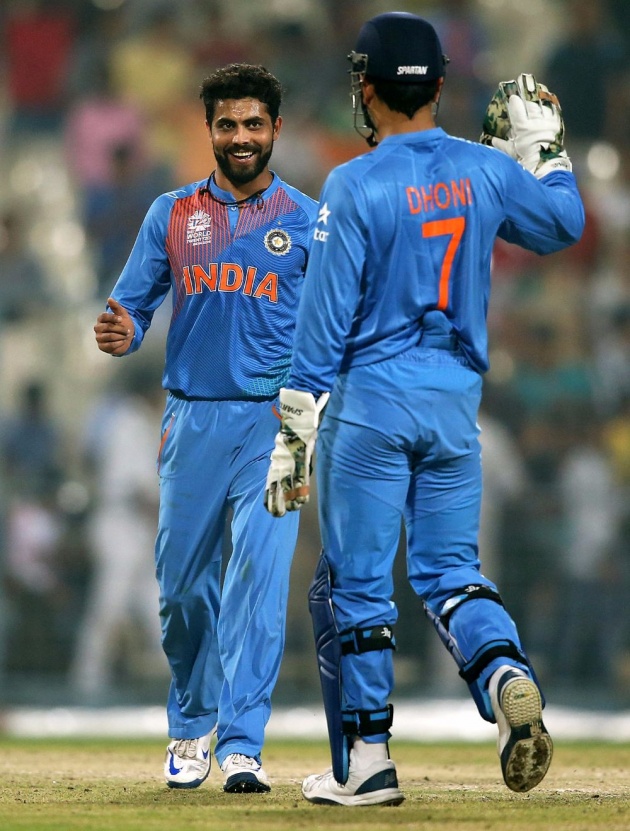Dilawar 98
I want to direct your attention to three recent moments of meditation on the game of cricket, each inspired by the happenings in three different T20 games.
Exhibit 1: On March 9, 2016, two T20 games - internationals, both of them - presented themselves as viewing options to the neutral fan. One was a bilateral encounter between two of the strongest teams in world cricket, the other was a World Cup qualifier between two teams who normally evoke dismissive descriptions, such as "minnow". The former featured South Africa taking on Australia, the latter, Oman taking on Ireland. I like watching high-quality cricket as much as anyone else; I chose Oman v Ireland.
Oman's innings was underway. An "upset" was brewing; a potential Cinderella story was being written. Truth be told, it wasn't much of a contest choosing which game to watch: I picked the one that "meant" something. It would break some hearts and fill others with joy and allow further dreams to be dreamed of. The other game was surely important for those playing, and for those watching at the ground, and possibly even those tuning in to the live telecast in South Africa and Australia. But other than possibly providing some T20 practice before the World Cup there was little riding on the game. There was no larger background context to embed the game into. It would soon be forgotten. I knew the Oman game wouldn't be - especially if the men from Oman won. Which they did.
There was a lesson there for cricket administrators, if they had been paying attention. Games of cricket, even when staged between teams who might not be thought of playing "international quality" cricket (a standard that is mysteriously attained the moment a team becomes a Full Member of the ICC), can be as interesting as any played between higher-ranked teams, so long as they mean something. And they can be made to mean something by providing context to them.

Moreover, and perhaps more importantly, they present themselves as viable viewing options to the cricket fan because they too can possess the features of a truly enthralling sporting contest - a visible challenge to be surmounted by dint of sporting skill and pluck. They too can provoke in us those basic instincts which we have cultivated over years of being cricket fans, and which find expression when we view even the simplest cricket encounters of all - a game glimpsed from a moving train, a pick-up game at school, a backyard throwdown.
A game is a game. We just need to find a way to get behind one of the two teams playing. And we are very good at doing so.
Exhibit 2: On February 27, 2016, during India's encounter with Pakistan in the 2016 Asia Cup, Mohammad Amir rocked the Indian upper order with three quick wickets. At one stage - in the third over - India had lost three wickets for eight runs. As Virat Kohli and Yuvraj Singh battled their way to a safer situation (which, given that this was a T20 game, would quickly become a match-winning situation), a basic cricketing fact became manifest all over again: wickets matter.
For a few brief overs, the most elemental of cricketing situations was upon us. Batsmen were fighting to resist a collapse, keeping their heads above the water. The walls could come down all too easily. For a few brief overs there was no talk of T20 being a batsman's game or a slam-bang silliness meant only for juvenile consumption.
The wickets to fall, taken in the early moments of a game, had seen to that. Once again we could see the bare facts of a cricket clash - that of the bowler straining to break through again, pitted against a defiant batsman determined to resist his depredations. It might have been T20 and not Test cricket, but for a while it didn't really matter. The fear or joy of the falling wicket - and the attendant tension it brought in its wake, one that quickly infused the game's setting - was the same.

Fans and players will find, somehow, within the confines of a T20 game, those aspects of cricket that made them love the game in the first place.
Which brings me to Exhibit 3.
On March 19, 2016, India played Pakistan in their World T20 pool game. In the fifth ball of the 16th over of Pakistan's innings, Umar Akmal was caught behind off Ravindra Jadeja. As the catch was completed, Dhoni and Jadeja celebrated briefly, and then, in more circumspect fashion, began exchanging notes. From a distance, it looked like the kind of conversation that bowlers, fielders and captains participate in all the time; a discussion of strategies and tactics, an airing of views on things that had gone right or wrong in the game. Perhaps Jadeja was pointing out to Dhoni that a "trick" had worked; perhaps Dhoni was pointing out to Jadeja that a piece of advice tendered had been shown to be perspicuous; perhaps the two were congratulating each other on having jointly brought about the batsman's downfall.
At that moment again, everything else dropped away - the occasion, the India-Pakistan hype, the fact of it being a T20 game, even perhaps the cricket to come after that delivery. At that moment, a bowler had taken a wicket, a fielder- his captain - had helped him to do so, and they were comparing notes. Like players always do when they play a game of cricket. At that moment, it could have been the lowliest of games, or the most exalted. At its heart it was still batsman against bowler.
It is all too easy when thinking of the hype that surrounds a T20 game, whether it is in the IPL, the BBL, or the World T20, to lose sight of the basic cricketing realities at its core. The atom of the game - a delivery bowled to a batsman - remains the same. You still need to score more runs than the other team. Everything else is detail. That fact is not lost on the fan or the player - even in the midst of the razzle-dazzle. This is why even the hardened follower of Test cricket can find something to hold his interest in a format of the game that is unmistakably different.



